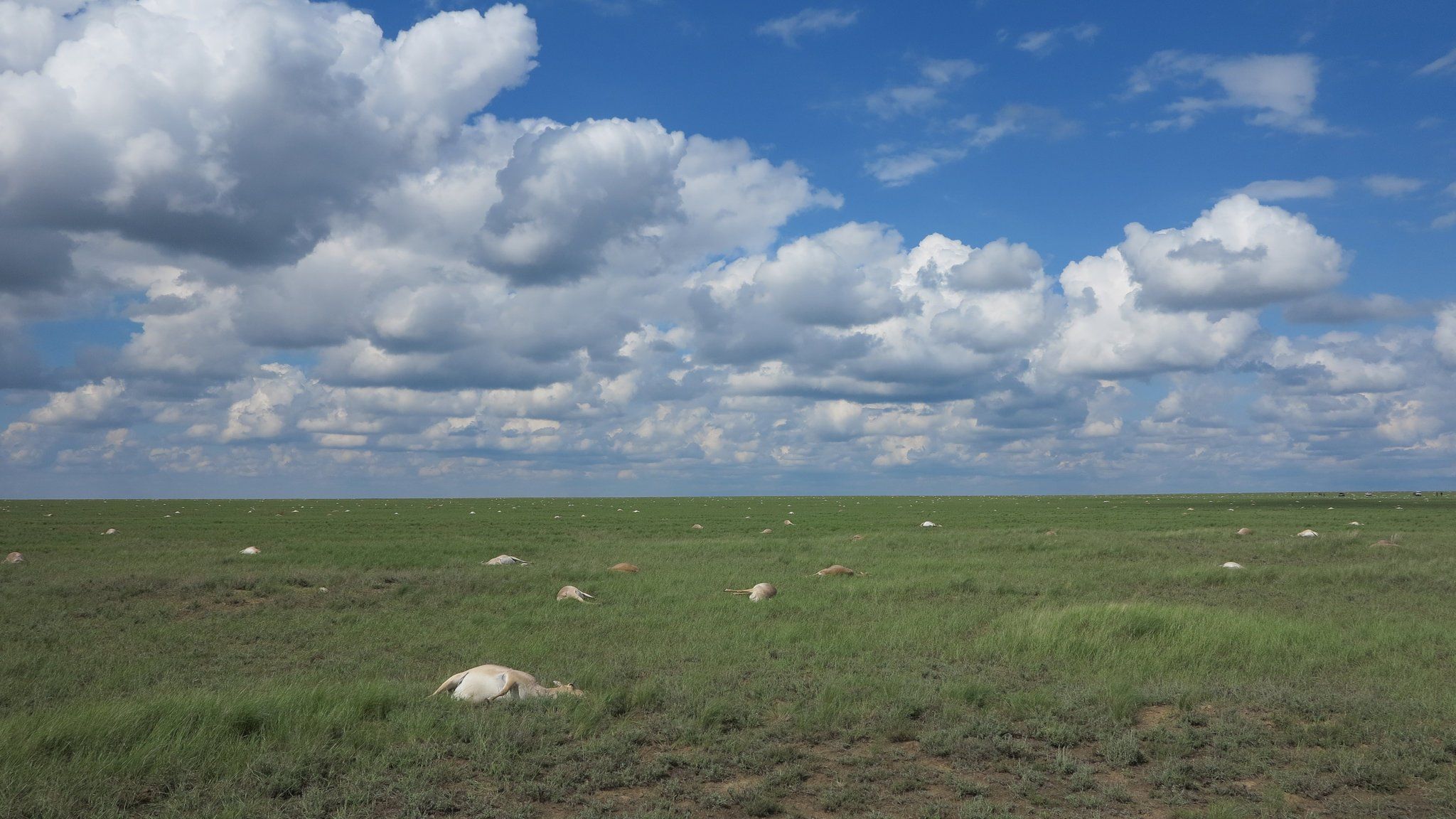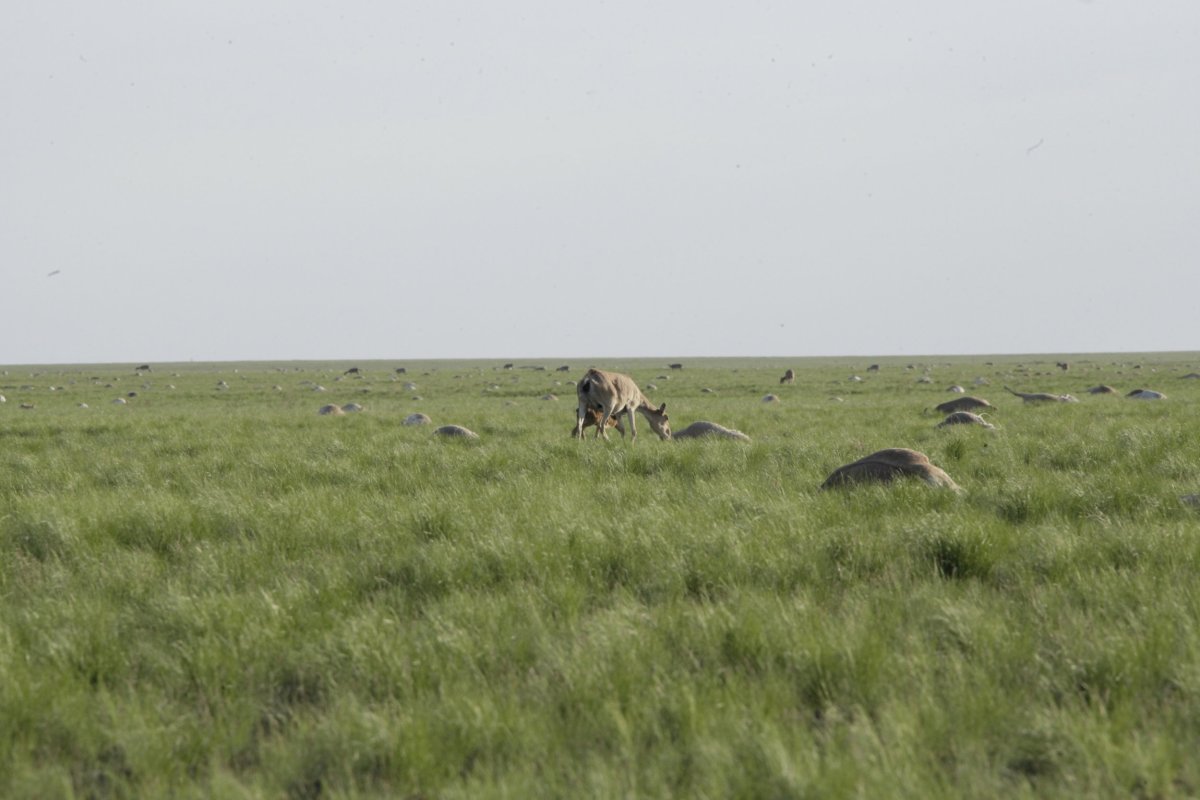
Scientists finally have an answer to what suddenly killed hundreds of thousands of antelope in 2015: a normally harmless bacteria made deadly by climate change.
Three years ago, entire herds of saiga antelope dropped dead for no apparent reason. An estimated 200,000 died, as well as newborn calves who suddenly had no mothers to care for them. Two-thirds of the global population of these animals that had just started to recover from poaching died within the span of a few weeks.
Confused at first, conservationists assessed the land for poison and analyzed the bodies for signs of illegal hunting. By studying the dead, researchers identified the killer: a bacteria called Pasteurella multocida type B.
These bacteria normally live harmlessly in the weird, long noses of saiga antelope, but then the bugs suddenly invaded the rest of the antelopes' bodies, causing hemorrhagic septicemia. The disease, which sometimes affects livestock, destroys cells wherever it goes, causing internal bleeding and essentially drowning the animals in their own body fluids.
But why did the bacteria suddenly turn deadly? A study published on Wednesday in the journal Science Advances points to a likely culprit: a bizarre and sudden change in climate.

Specifically, the researchers used statistical modeling to determine that the climate in areas with affected saiga herds was unusually warm and wet. It's unclear exactly how a moist, warm environment influences P. multocida to kill its host. However, lab experiments in rats have demonstrated that such an environment does indeed help the bacteria spread, according to The Atlantic.

In November 2015, after the mortality event, representatives from several countries that are home to the migratory saiga came together to work out how to protect the remaining saiga, citing wildlife health management, anti-poaching efforts and the removal of fences that block their migration. The new study also encouraged efforts to prevent livestock from spreading disease.
On a larger scale, addressing climate change can prevent mass die-offs and bizarre events that can lead to extinctions for a variety of animals. As the antelope deaths demonstrate, even seemingly innocuous changes in temperature and humidity can have devastating effects.
Uncommon Knowledge
Newsweek is committed to challenging conventional wisdom and finding connections in the search for common ground.
Newsweek is committed to challenging conventional wisdom and finding connections in the search for common ground.
About the writer
Kristin is a science journalist in New York who has lived in DC, Boston, LA, and the SF Bay Area. ... Read more
To read how Newsweek uses AI as a newsroom tool, Click here.








